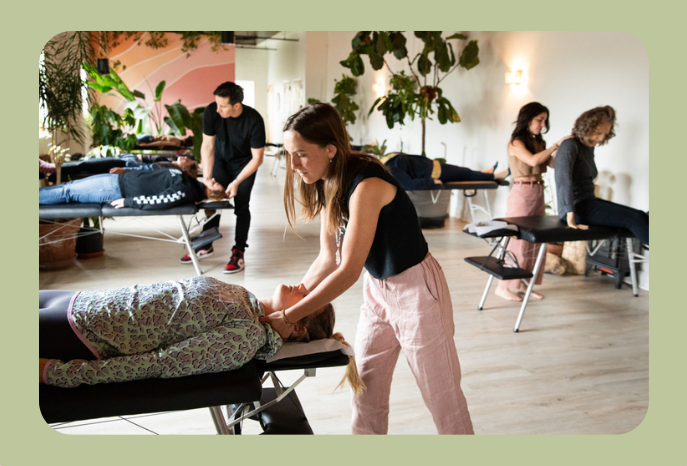Polyvagal Theory Made Simple: How Safety Unlocks Healing
If you’ve ever wondered why you can “do all the right things” and still feel anxious, shut down, or on edge, this one’s for you.
Polyvagal Theory, pioneered by neuroscientist Dr. Stephen Porges, offers a clear, compassionate map of the nervous system that explains why we feel what we feel and how we can reliably return to safety, connection, and health.
This isn’t just theory for theory’s sake. When you learn how your nervous system reads the world (often outside conscious awareness), you gain practical levers to reduce stress, heal trauma, improve relationships, and build true resilience. Think of it as getting the owner’s manual for your inner wiring.
(P.S. If you’re local to Chattanooga, you’ll see why so many in our community resonate with this approach: it’s simple and doable.)
The 3 states of your autonomic nervous system (ANS)
Polyvagal Theory expands the old “fight-or-flight vs. rest-and-digest” model into three adaptive states. Each is normal and protective in its own context:
- Ventral Vagal (Safe + Social): The “green zone.” When this branch of the vagus nerve is leading, you feel calm, connected, curious, and engaged. Your voice softens, your facial muscles are expressive, digestion hums, and your heart-rate variability (HRV) tends to be higher, a good sign of flexibility and resilience.
- Sympathetic (Fight or Flight): The “yellow zone.” Your system readies you to act. In this zone, heart rate rises, pupils dilate, blood moves to big muscles. Useful in real danger (or a hard workout), but exhausting when it’s chronically “on.”
- Dorsal Vagal (Shutdown/Freeze)” The “red zone.” When escape isn’t possible, your body protects you by conserving energy through numbness, collapse, fogginess, disconnection. This state can feel scary, but it’s a built-in survival response.
None of these states are “bad.” They’re adaptive. Healing starts when your system can move fluidly among them, and return to ventral safety more quickly and more often.
Neuroception: Your body’s silent “safety detector”
Your brainstem and body are constantly scanning for cues of safety or threat, below conscious awareness. Porges calls this process neuroception. A sudden tone of voice, a stiff face, harsh lighting, or even your own rapid breathing can be read as “unsafe,” flipping you into sympathetic or dorsal states.
Conversely, warm prosody, soft eye contact, steady breath, and rhythmic sound read as “safe,” inviting your system back into connection.
Why this matters for trauma, health, and relationships
- Trauma isn’t just “what happened,” it’s how your nervous system adapted to overwhelm. Polyvagal-informed practices help you increase vagal tone and restore choice in your responses. Higher vagal tone is associated with better emotion regulation, social engagement, and cardiovascular health.
- Health: HRV (a window into vagal function) improves with paced breathing and biofeedback, and tends to correlate with better stress resilience.
- Relationships: Safety is contagious. Your regulated presence (voice, eyes, breath) co-regulates others and invites connection. Think of it as nervous systems syncing up in real time. Research suggests upward spirals between vagal tone and social connectedness.
How to recognize your state (quick self-check)
- Ventral (safe & social): “I can deal.” Warmth, curiosity, steady breath, normal digestion, flexible thinking.
- Sympathetic (mobilized): “I must fix/escape.” Tight chest, fast breath, jaw tension, racing thoughts, irritability.
- Dorsal (shutdown): “I can’t.” Heavy limbs, blankness, withdrawal, low energy, time feels slow.
Noticing your state, without judgment, is step one. From there, you can offer your body the right input for where you are, not where you wish you were.
Practical ways to shift toward safety (and stay there longer)
Below are simple, science-informed tools you can use daily. They’re not quick fixes; they’re reps that build tone, flexibility, and trust in your system.
- Paced breathing (a nervous-system superpower): Try resonance breathing (about 5–6 breaths/min): inhale ~5s, exhale ~5–6s, 5–10 minutes. This rhythm optimizes baroreflex function and nudges HRV upward, an indirect sign your vagus is online. Pro tip: The longer exhale tells your body, “we’re safe.”
- Orient to the room: Turn your head slowly and let your eyes scan the environment. Find three neutral or pleasant things you can see, hear, and feel. This updates neuroception: “No threat here; we can settle.”
- Voice & vagus hacks: Hum, chant, sing, or read out loud with warm prosody. The vagus travels through the larynx and middle ear; vocalization and listening to gentle, melodic voices can cue safety.
- Co-regulate on purpose: Sit with a safe person (or even a pet). Make soft eye contact, breathe together, speak kindly. Social engagement isn’t fluff, it’s biological medicine for the ANS.
- Ground through the body: Pressure & touch: a weighted blanket, a firm self-hug, or gentle hand on your chest. Rhythm: slow rocking or swaying. Shake it out: brief, playful shaking resets muscular bracing.
- Sound & light hygiene: Choose warm, steady lighting in the evening; reduce harsh fluorescents. Use noise that is predictable and soothing (rain, soft music). Unpredictable noise spikes vigilance.
- Boundaries (with love): Limit exposure to media and conversations that leave your system buzzing. Your neuroception is listening, even when you think you’re “fine.”
- Nourish the physiology: Steady blood sugar, magnesium-rich foods, omega-3s, and consistent sleep support a calmer baseline and better vagal function. (Nutrition isn’t a cure-all, but it’s friendly terrain for a calmer ANS.)
- Gentle chiropractic & bodywork (when appropriate): For some, hands-on work that respects tone (often called gentle or tonal chiropractic) can help reduce guarding patterns and invite the body toward parasympathetic balance. Work with providers who understand pacing and safety cues.
A quick guide for different states
- If you’re amped (sympathetic): lengthen your exhale, lower visual stimulation (soft gaze), use weights/pressure, and move rhythmically (walk, sway).
- If you’re shut down (dorsal): orient to the room, add gentle up-shifts through light, music, a warm drink, seated rocking, very short bouts of tidy tasks. Avoid forcing intense exercise; think “gradual sunrise,” not “spotlight.”
- If you’re in ventral: savor it. People, play, nature, creativity. You’re building a bigger “home base” each time you linger here.
Over time, these micro-choices teach your body that the world (and you) are reliable, which increases vagal tone and makes it easier to bounce back from stress.
Polyvagal for daily life
- Parenting: Match your child’s state before you guide their behavior. Safety first, lessons second.
- Partnerships: The tone matters as much as the words. A warm voice and softer face say “I’m with you.”
- Work: Take 60-second state checks between tasks. Five slow breaths can change your next hour.
- Healing & trauma work: Go at the speed of trust. Stabilize safety before processing the big stuff.
You don’t have to think your way out of survival states. You practice your way back to safety…one breath, hum, boundary, and connection at a time.
Frequently asked (really good) questions
Is Polyvagal “proven”? It’s an evolving framework with growing empirical support around vagal function, HRV, and social engagement. It’s not a one-size-fits-all dogma; it’s a clinically useful lens that many find clarifying.
How do I measure progress? You’ll feel it first: fewer spikes, quicker recovery, more ease with people. HRV tracking can help, but your lived experience is the gold standard.
Do I have to “think positive”? No. This is body-first. Your thoughts often follow your state. Change the state, and new thoughts become available.
Key Takeaways
Safety isn’t the absence of stress; it’s the capacity to meet life as it is and come back to yourself, again and again.
Polyvagal Theory gives you language, tools, and permission to work with your biology, not against it. Try one practice today, repeat tomorrow. Share it with someone you love.
If you’re near Chattanooga and want support applying this in your life, you’re welcome in our space. When healing feels safe, healing becomes possible.
Dive Deeper:
Want to explore more topics on subconscious healing and holistic health? Check out our video resources and join our REV community online for more tools and practices that elevate your health and enhance your nervous system integration.
Phone: (423) 713 - 7390 / Schedule Online: click here
Disclaimer: This blog is meant for informational & entertainment purposes only, and should not be taken as medical advice. Please consult your healthcare practitioner before making any changes or if you have any questions regarding information provided.











